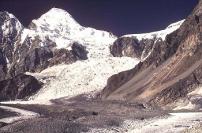 Bangladesh is often seen as being in the fragile front line of climate change, being especially susceptible to sea-level rise.
Bangladesh is often seen as being in the fragile front line of climate change, being especially susceptible to sea-level rise.
But now climate scientists are worrying about another equally dramatic effect – the retreat of the Himalayan glaciers that feed the great rivers on which the country depends.
The country is one huge delta, formed by the Ganges, Brahmaputra and Meghna rivers. Flooding may seem to be Bangladesh’s greatest enemy, but in fact the rivers are its lifeline. They are the main source of fresh water for a country where agriculture represents 21 per cent of the economy.
Drought is already being felt. Farmers who used to grow rice have turned to farming prawns because the water in their fields has turned so salty nothing will grow there. Last year the north-west of the country faced an unprecedented drought, after the annual monsoon rains failed completely.
Professor Ainun Nishat, one of the country’s leading climate experts, says it is the melting of the Himalayan glaciers that worries him most – more than rising sea levels or changing local weather patterns. “What happens in two to five years when the glaciers are gone?” he asks.
What happens indeed?

Hi
This is a story everyone in South Asia should read. As it is large tracts of Bangladesh will disappear into the sea because of rising sea levels. West Bengal’s Sunderbans is already feeling the heat. Island has disappeared over there.
And still countries want to fool around. India mooted river linking (what rivers will be left?) China wants to divert the Brhamaputra.
Now nature will teach us a lesson. RA
It’s a shame what happened to Bangladesh. I hope the world steps up and helps them.